It looks like you're using an Ad Blocker.
Please white-list or disable AboveTopSecret.com in your ad-blocking tool.
Thank you.
Some features of ATS will be disabled while you continue to use an ad-blocker.
share:
Originally posted by Gibborium
reply to post by mockrock
Where are the sweeping moonscape shots? Earth from the surface of the moon etc ? They were only able to fake these shots in the following Apollo missions.. that's why none exist from Apollo 11
Apollo pans
And they were more interested in the moon. After all, that is what they went to explore.
Exploring? Or were they really making propaganda for magazine covers?
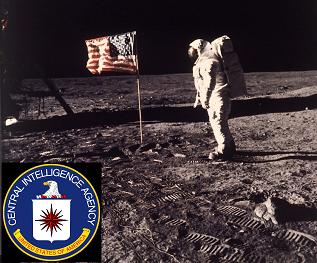
reply to post by FoosM
Let me save everyone fifteen minutes of their lives.
Correct, but Jarrah assures us he won't lose any sleep over it.
2) If the triangular flash we see in the liftoff videos is in fact Mylar foil reflections, why did you only show the Apollo 15 liftoff video?
Because he wanted to show the mylar, which he insouciently claims was being blown by fans.
Fans hidden in the descent stage "model."
A settling piece of mylar shoots out at nearly a right angle as it hits the hyperexpanding rocket exhaust. This should have clued him in to just how wide the "plume" really is. Instead, he suggests it may have been put in in post-production.
The giant gantries at Langley were simply painted black. Since he obviously could find no evidence to support this, he goes on to suggest that maybe they were taken out in post-production matte work. Or something. Keep looking for those pictures of black gantries or discarded pre-matte film, Jarrah!
Jarrah submits an infrared video of a Delta II launch and compares the "plumes" of the first stage, verniers and the hypergolic upper stage. He claims they are identical. See for yourself:
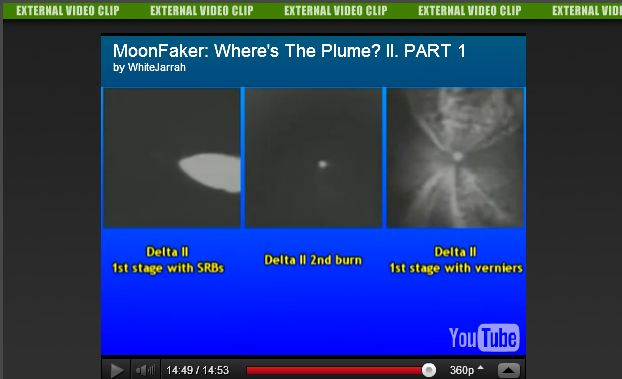
Hmmm... they don't look identical to me. I just love it when Jarrah debunks himself.
No, no they won't.
Let me save everyone fifteen minutes of their lives.
1) The Apollo 9 footage in fact shows the S-IVB, not the CSM or LM.
Correct, but Jarrah assures us he won't lose any sleep over it.
2) If the triangular flash we see in the liftoff videos is in fact Mylar foil reflections, why did you only show the Apollo 15 liftoff video?
Because he wanted to show the mylar, which he insouciently claims was being blown by fans.
3) What's blowing the said Mylar foil around?
Fans hidden in the descent stage "model."
4) In the Apollo 17 liftoff videos there is a piece of debris that changes direction as it gets caught in the (invisible) exhaust plume.
A settling piece of mylar shoots out at nearly a right angle as it hits the hyperexpanding rocket exhaust. This should have clued him in to just how wide the "plume" really is. Instead, he suggests it may have been put in in post-production.
5) Where are the overhead cables and support structures?
The giant gantries at Langley were simply painted black. Since he obviously could find no evidence to support this, he goes on to suggest that maybe they were taken out in post-production matte work. Or something. Keep looking for those pictures of black gantries or discarded pre-matte film, Jarrah!
6) The upper stage of the Delta II rocket used the exact same fuels as the Apollo LM, and its exhaust is invisible.
Jarrah submits an infrared video of a Delta II launch and compares the "plumes" of the first stage, verniers and the hypergolic upper stage. He claims they are identical. See for yourself:

Hmmm... they don't look identical to me. I just love it when Jarrah debunks himself.
All of these objections will be addressed thoroughly in this video.
No, no they won't.
Originally posted by SayonaraJupiter
Does lunar regolith get burned by the descent engines? How can there be pure black pixels all around the descent stage while the descent stage is reflecting pure white?
Have you ever downloaded the original image files off the LROC site? If you have, you'd note that the images tend to need some brightness/contrast adjustment, so depending on how much you adjust it, it can make some darker areas completely black, and light areas completely white. It's really that simple.
The image of the Apollo 11 site you posted was taken when the Sun was more or less directly overhead, shining down on the landing site. The shadow of the LM is underneath it, plus all the disturbed regolith from when the astronauts were working around the LM, which adds to the darkness around it. Since the Sun is overhead it also makes the top LM brighter since it's reflecting all that light upwards.
Originally posted by SayonaraJupiter
That shadow of the LM descent stage is really, really, really long. It's half way to the crater.
If you look really closely you can see that the shadow is thinner as it gets closer to the descent stage.
Hmmm.
Hmmm indeed. Perhaps it's due to the fact that the LM sits on four landing legs with an open space below the main body of the decent stage. So when the Sun is really low on the horizon, it shines through the underside of the LM.
Here's a link to a thread where some one posted some illustrations of the long LM shadow. Scroll down to a post made by rodionh.
reply to post by jra
More nonsense guys wake up!
Read my post above this.
Time to make things happen in the real world, don't let them bury this.
Will you accept a live conference debate?
More nonsense guys wake up!
Read my post above this.
Time to make things happen in the real world, don't let them bury this.
Will you accept a live conference debate?
reply to post by jra
Thanks for the link. I looked at the post you mentioned.. this one ... Re: The first LRO images of Apollo landing sites « Reply #21 on Jul 18, 2009, 2:40am »
Unfortunately, his simulated LM shadow picture, the shadow does not reach half way to the crater like it does in the NASA pic. Sorry I don't have time to invest in that thread.
About the only thing I agree with on that picture is the nomenclature of referring to it as a "long shadow" But like I said his shadow doesn't make the same distance to the crater.
Thanks for the link. I looked at the post you mentioned.. this one ... Re: The first LRO images of Apollo landing sites « Reply #21 on Jul 18, 2009, 2:40am »
I first took a snapshot of a simulated descent stage (quite well detailed 3D model) sitting on the lunar surface at Tranquility Base (exact coordinates, with simulated landmarks as well).
Unfortunately, his simulated LM shadow picture, the shadow does not reach half way to the crater like it does in the NASA pic. Sorry I don't have time to invest in that thread.
About the only thing I agree with on that picture is the nomenclature of referring to it as a "long shadow" But like I said his shadow doesn't make the same distance to the crater.
reply to post by FoosM
I went back and scanned the thread for discussions on the "plume" issue. There may be more, but I found these:
WeedWacker page 146-147 Link YouTube video has been made private
FoosM page 310
FoosM page 410
FoosM page 634-636
FoosM page 667 almost forgot this one.
FoosM page 654
Seems you are a bit obsessed with this idea. Yet, you never seem to prove your own premise, you only parrot what others have said. IMO it's time to move on to other rehashing of other material already discussed.
I went back and scanned the thread for discussions on the "plume" issue. There may be more, but I found these:
WeedWacker page 146-147 Link YouTube video has been made private
FoosM page 310
FoosM page 410
FoosM page 634-636
FoosM page 667 almost forgot this one.
FoosM page 654
Seems you are a bit obsessed with this idea. Yet, you never seem to prove your own premise, you only parrot what others have said. IMO it's time to move on to other rehashing of other material already discussed.
edit on 11/19/2011 by Gibborium because: add a link
Originally posted by SayonaraJupiter
Unfortunately, his simulated LM shadow picture, the shadow does not reach half way to the crater like it does in the NASA pic.
So what? All one would have to do is lower the angle of the Sun light and the shadow gets longer. This isn't rocket science. The point of showing you that illustration was to show why it appears to get thinner as it gets closer to the descent stage. Having looked at the illustration, do you now understand why it does?
reply to post by jra
I understand that the shadows of the LRO picture reach ~50% toward the crater on the right.
I understand that the simulations of lunar pictures that you submitted from a different website reveal shadows that do not reach ~25% toward the crater on the right.
Therefore, the simulation you linked to is not completely credible, IMO, even though the explanation for the shadow being thinner closer to the LM is a plausible explanation.
I understand that the shadows of the LRO picture reach ~50% toward the crater on the right.
I understand that the simulations of lunar pictures that you submitted from a different website reveal shadows that do not reach ~25% toward the crater on the right.
Therefore, the simulation you linked to is not completely credible, IMO, even though the explanation for the shadow being thinner closer to the LM is a plausible explanation.
edit on 11/19/2011 by SayonaraJupiter because: (no reason given)
reply to post by SayonaraJupiter
Please elaborate. Or are you creating your own propaganda?
Exploring? Or were they really making propaganda for magazine covers?
Please elaborate. Or are you creating your own propaganda?
reply to post by Gibborium
It can be a somewhat of a shock for many people when they finally understand this : all those Apollo pictures were processed and screened by the CIA. FoosM and I have been providing information about this in the last couple of pages which outlines, in broadest detail, shown in declassified top secret documents, the relationships between NASA, DoD, NRO, CIA, NPCI, COMIREX, and more, including the formation of ad hoc committees, the extremist, anti Communist paranoia that infected all aforementioned entities, all of which adds credence to the legacy of secrecy in the Apollo program.
In my best estimate, every "Apollo" digital image found on a government server is at least 5th or 6th generation.
1st generation are the original negatives source material which are always locked up.
2nd gen are numbered and non-numbered masters, always locked up.
3rd gen archive prints of various resolutions, various provenance, copies of the 2nd generation. This is the generation of images where we find cropping, tinting, and other enhancements. for example, images of blue skies on the moon.....
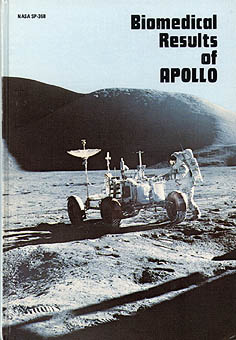
4th gen large scale digital scans of 2nd or 3rd generation prints, we have to trust that the scans are as closer to 2nd and not 3rds.
5th gen smaller scale (internet friendly) digital converted image files that we find on government servers.
I put that logo on the photo not as an alteration or obscuration, but, to clearly identify the origin of the image, as a courtesy to NASA cheerleaders who maintain that NASA has nothing to hide with regard to Apollo photography. Please correct me if I am wrong.
It can be a somewhat of a shock for many people when they finally understand this : all those Apollo pictures were processed and screened by the CIA. FoosM and I have been providing information about this in the last couple of pages which outlines, in broadest detail, shown in declassified top secret documents, the relationships between NASA, DoD, NRO, CIA, NPCI, COMIREX, and more, including the formation of ad hoc committees, the extremist, anti Communist paranoia that infected all aforementioned entities, all of which adds credence to the legacy of secrecy in the Apollo program.
In my best estimate, every "Apollo" digital image found on a government server is at least 5th or 6th generation.
1st generation are the original negatives source material which are always locked up.
2nd gen are numbered and non-numbered masters, always locked up.
3rd gen archive prints of various resolutions, various provenance, copies of the 2nd generation. This is the generation of images where we find cropping, tinting, and other enhancements. for example, images of blue skies on the moon.....

4th gen large scale digital scans of 2nd or 3rd generation prints, we have to trust that the scans are as closer to 2nd and not 3rds.
5th gen smaller scale (internet friendly) digital converted image files that we find on government servers.
I put that logo on the photo not as an alteration or obscuration, but, to clearly identify the origin of the image, as a courtesy to NASA cheerleaders who maintain that NASA has nothing to hide with regard to Apollo photography. Please correct me if I am wrong.
Originally posted by DJW001
reply to post by mockrock
The astronauts could not see stars.. nor take pictures of stars. If they had time to compose the vast amount of propaganda shots which would have taken great care and time.. a forgetting to snap the stars was quite an oversight
This post is directed at whoever it was who was naive enough to star your post. Mockrock knows perfectly well that the astronauts took pictures of stars:
[atsimg]http://files.abovetopsecret.com/images/member/d8aa305a2898.jpg[/atsimg]
Taken from a moving car, at night, in the desert? Or, propaganda shots claiming to be space photos taken by heroic astronauts? Anyway, it's quite a lot less than "WE SAW MILLIONS OF STARS"
Source RICHARD W. UNDERWOOD INTERVIEWED BY SUMMER CHICK BERGEN HOUSTON, TEXAS – 17 OCTOBER 2000
We wanted pictures that recorded it the way the astronauts saw it, and this camera with this lens is exactly the way the human eye works.
BERGEN: Today is October 17, 2000. This oral history with Richard Underwood is being conducted for the Johnson Space Center Oral History Project at the offices of the Signal Corporation.
I've read his oral history up & down and I can't seem to find a specific anecdote which refers to which camera & lens he is speaking about. Perhaps I have missed it...
Underwood says that the film was "ultra-fast, if anything's there, your're going to see them." So with the correct film film and correct camera settings, we should have pictures of "MILLIONS OF STARS".
But when he was supposed to photograph these very unique things on the way home that scientists believed were in space and we worked out all the pointings and other information to record the Legrangian points, some people say there's a lot of dust and other things there, all these other, zero-gravity points between various things out there, and the human eye can't see them and from the Earth you couldn't see them because of the atmosphere. Out there, with ultra-fast film, if anything's there, you're going to see them. So he's ready to do the first experiment, the film's shot orbiting the Moon, overexposed, ten stops, eleven stops maybe.
However, Anders was badly screwing up the photography on Apollo 8.
Another interesting one was on Apollo 8, where [William A.] Anders overexposed a roll of film by ten stops, and they were the first pass behind the Moon. It was a Super Royal XPAN ASA 10000 film. He exposed it at 64. The magazines were all coded and he put the wrong one on, because he told me when he was coming back from the Moon that he was tired, and put the wrong mag on.
mockrock is correct and Richard Underwood was basically "on-call 24x7" to deal with photographic contingencies like when William Anders messes up badly,
So I guess it's two o'clock in the morning and they're on their way back from the Moon, first thing on the way back, and my phone rings and capcom says, "Hey, Bill Anders wants to talk to you."
17 October 2000 28
Johnson Space Center Oral History Project Richard W. Underwood
So I hop on my bike in Nassau Bay, drive through the night into mission control, and Bill puts it, "What if I used a Super Royal XPAN like it was Plus X?"
I said, "There ain't no what-ifs. You done done it, because it's three o'clock in the morning here, you're 200,000 miles away. We talk what-ifs in meetings in the real live world. You've done done it."
He says, "Well, yes, I put the wrong mag on the pictures of the far side of the Moon," and all this. "What can you do?"
I said, "Well, you destroyed the latent image. We'll think about it, but thanks for telling us. Either we're going to process the roll of film in advance and know we're going to get one as clean as a window pane or we'll think about it."
It's amazing that Anders didn't blow the entire photographic mission but he comes back to redeem himself, as the story goes,
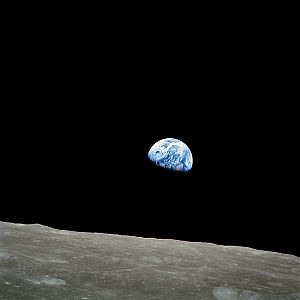
The same picture is issued on a US Postage Stamp with the religious code words emblazened "In the beginning, God..."
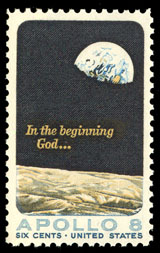
It's important to remember that the Communists were atheists and every time a NASA astronaut invokes God it is like flipping the middle finger to to the Russians, because it was a childish competition in the first place, the real goal was this.
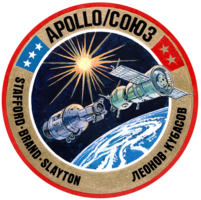
edit on 11/20/2011 by SayonaraJupiter because: tags bloody tags
Originally posted by Gibborium
Seems you are a bit obsessed with this idea. Yet, you never seem to prove your own premise, you only parrot what others have said. IMO it's time to move on to other rehashing of other material already discussed.
Whats the title of this thread?
But thanks anyway for making a summary for us.
Whenever someone comes to the subject of Apollo and studies it deeply he or she eventually encounters the strange phenomenon known as Apollo
photographic anomalies. There have been many claims about these pictures so it best to be careful to study the situation intensely. First we
should like to look at NASA's attitude toward photography, in general, looking first at anecdotal evidence from primary sources...
Date difference from Feb 20, 1962 to Jul 16, 1969. The total number of days between Tuesday, February 20th, 1962 and Wednesday, July 16th, 1969 is 2,703 days. This is equal to exactly 7 years, 4 months, and 26 days.
When John Glennbecame the first American in orbit, bringing a camera was an afterthought. An Ansco Autoset 35mm camera, manufactured by Minolta, was purchased in a local drug store and hastily modified so the astronaut could use it more easily while in his pressure suit.
He became the third person in space and the first American to orbit the Earth, aboard Friendship 7 on February 20, 1962, on the Mercury-Atlas 6 mission, circling the globe three times during a flight lasting 4 hours, 55 minutes, and 23 seconds.
Photography was deemed nothing more than a recreational extra.
Not only was little expected of those first pictures taken from space, but there was serious concern that taking pictures of other nations from orbit would be seen as an act of ill will and even one of war, as sovereign and sensitive nations might resent having pictures taken from orbit. But space photography developed quickly.
Nearly 100,000 photographs taken by NASA's lunar probes, Ranger, Surveyor, and Lunar Orbiter, helped to map Apollo's landing sites.
Then Lunar Orbiters methodically mapped much of the Moon, examining the candidate sites for manned landings. These spacecraft carried fully automated film processing laboratories. After processing, the film was scanned for radio transmission of the pictures back to Earth.
Unmodified Hasselblad 550C medium format cameras were first used on the last two Mercury one-man missions in 1962 and 1963. The Hasselblads proved the mainstay of the early space program and were used throughout the Gemini two-man spaceflights in 1965 and 1966. In addition to the excellent mechanical and optical properties of the cameras and their Zeiss lenses, the cameras were relatively simple to use, and film was pre-loaded into magazines that could easily be interchanged in mid-roll when lighting situations changed. In addition to the Hasselblads, on the second Gemini mission, history was made when the first picture of a spacecraft in orbit was taken by astronaut Ed White as he floated outside his spacecraft. He used a Zeiss Contarex 35mm camera mounted atop his gas-powered maneuvering gun.
On Apollo 8 human beings saw, with their own eyes, the Earth as a sphere in space. Few sights in human history have been as exhilarating as that first Earthrise over the lunar horizon. These new views of the Earth in space were an unforeseen revelation. Interest in ecology and the protection of the Earth's environment can be traced to these first missions to another world.
On Apollo 8, Hasselblad EL electric cameras were used for the first time. The electric motor in these Hasselblads largely automated the picture taking process. The astronauts needed only to set the distance, lens aperture, and shutter speed, but once the release button was pressed, the camera exposed and wound the film and tensioned the shutter. Two Hasselblad EL cameras, each with a Planar f 2.8/80mm [normal] plus a single Sonnar f5.6/250mm [telephoto] lens and seven magazines of 70mm film, were carried. The cameras, film magazines, and lenses used on Apollo 8 had black anodized surfaces to eliminate reflections. Modifications to the cameras included special large locks for the film magazines and levers on the f-stop and distance settings on the lenses. These modifications facilitated the camera's use by the crew operating with pressurized suits and gloves. Additionally, the cameras had no reflex mirror viewfinder and instead a simple sighting ring assisted the astronaut in pointing the camera.
Each film magazine would typically yield 160 color and 200 black and white pictures on special film. Kodak was asked by NASA to develop thin new films with special emulsions. On Apollo 8, three magazines were loaded with 70 mm wide, perforated Kodak Panatomic-X fine-grained, 80 ASA, b/w film, two with Kodak Ektachrome SO-68, one with Kodak Ektachrome SO-121, and one with super light-sensitive Kodak 2485, 16,000 ASA film. There were 1100 color, black and white, and filtered photographs returned from the Apollo 8 mission.
In addition to the Hasselblad cameras, Apollo 8 carried a black and white television camera, a 16mm motion picture camera, exposure meters, several types of filters, and other camera accessories.
Source history.nasa.gov...
Date difference from Feb 20, 1962 to Jul 16, 1969. The total number of days between Tuesday, February 20th, 1962 and Wednesday, July 16th, 1969 is 2,703 days. This is equal to exactly 7 years, 4 months, and 26 days.
Originally posted by SayonaraJupiter
We wanted pictures that recorded it the way the astronauts saw it, and this camera with this lens is exactly the way the human eye works.
Underwood says that the film was "ultra-fast, if anything's there, your're going to see them." So with the correct film film and correct camera settings, we should have pictures of "MILLIONS OF STARS".
Maybe this is why astronauts denied seeing any stars!
But when he was supposed to photograph these very unique things on the way home that scientists believed were in space and we worked out all the pointings and other information to record the Legrangian points, some people say there's a lot of dust and other things there, all these other, zero-gravity points between various things out there, and the human eye can't see them and from the Earth you couldn't see them because of the atmosphere. Out there, with ultra-fast film, if anything's there, you're going to see them. So he's ready to do the first experiment, the film's shot orbiting the Moon, overexposed, ten stops, eleven stops maybe.
He just basically contradicted some posters here who have stated that atmosphere does not make a difference.
Nice summary by the way.
The key for me here is that NASA intended to have pictures of the heaven's etc. Not only the moon. At least thats what they were feeding to the public. Sparking their imagination to open their wallets. And they claimed to have the tools for that to happen. So again, that contradicts posters here on this thread. But thats NASA, full of contradictions, and Never A Straight Answer.
Date difference from Feb 20, 1962 to Jul 16, 1969. This is equal to exactly 7 years, 4 months, and 26 days.
In 1962, NASA is purchasing drug store cameras. By 1969, NASA has become the world's best expert only source of photos from the lunar surface. Think about it.
Photos have propaganda value. Richard Nixon is in the White House. Frank Borman is in the White House with the President when Apollo 11 launches for the moon.
Everything is going great. Mary Jo Kopechne is dead, Edward Kennedy is implicated...
[atsimg]http://files.abovetopsecret.com/images/member/a408b0785b19.jpg[/atsimg]
And the propaganda phone call is critical to establishing the official credibility of the mission...
[atsimg]http://files.abovetopsecret.com/images/member/4c7cf78f8c67.jpg[/atsimg]
No sooner has Apollo 11 splashed down, Nixon is on the air craft carrier to welcome home the Apollo 11 crew by trapping them into a quarantine container...
[atsimg]http://files.abovetopsecret.com/images/member/c391758adf9e.jpg[/atsimg]
Frank Borman is headed to Russia

The NASA cheerleaders need to understand and finally accept the fact that the Apollo Propaganda Program was a world-wide operational success thanks to the efforts of propaganda films
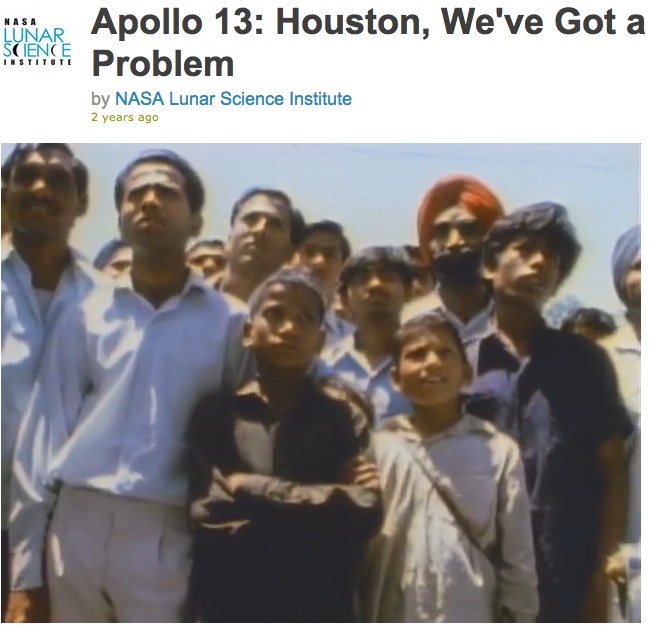
The NASA cheerleaders need to accept the facts. If Werner Von Braun somehow died before being captured by the Americans.... the Russians would most likely have won in the race to the moon.
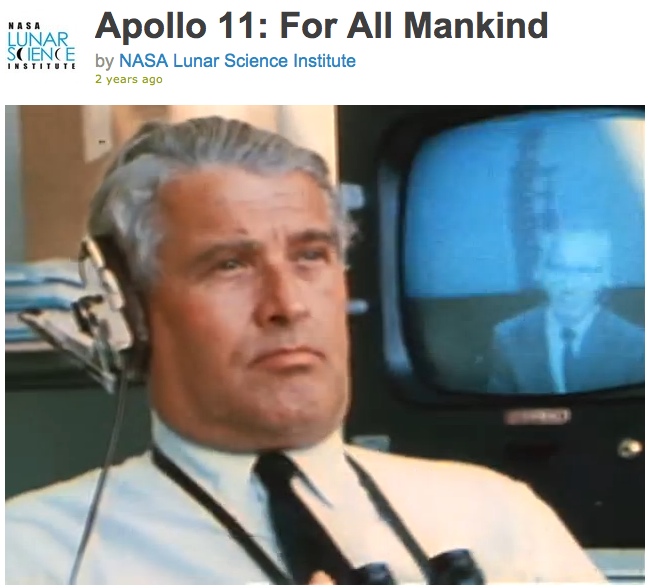
In 1962, NASA is purchasing drug store cameras. By 1969, NASA has become the world's best expert only source of photos from the lunar surface. Think about it.
Photos have propaganda value. Richard Nixon is in the White House. Frank Borman is in the White House with the President when Apollo 11 launches for the moon.
Everything is going great. Mary Jo Kopechne is dead, Edward Kennedy is implicated...
[atsimg]http://files.abovetopsecret.com/images/member/a408b0785b19.jpg[/atsimg]
And the propaganda phone call is critical to establishing the official credibility of the mission...
[atsimg]http://files.abovetopsecret.com/images/member/4c7cf78f8c67.jpg[/atsimg]
No sooner has Apollo 11 splashed down, Nixon is on the air craft carrier to welcome home the Apollo 11 crew by trapping them into a quarantine container...
[atsimg]http://files.abovetopsecret.com/images/member/c391758adf9e.jpg[/atsimg]
Frank Borman is headed to Russia

The NASA cheerleaders need to understand and finally accept the fact that the Apollo Propaganda Program was a world-wide operational success thanks to the efforts of propaganda films

The NASA cheerleaders need to accept the facts. If Werner Von Braun somehow died before being captured by the Americans.... the Russians would most likely have won in the race to the moon.

Originally posted by FoosM
Nice summary by the way.
The key for me here is that NASA intended to have pictures of the heaven's etc. Not only the moon. At least thats what they were feeding to the public. Sparking their imagination to open their wallets. And they claimed to have the tools for that to happen. So again, that contradicts posters here on this thread. But thats NASA, full of contradictions, and Never A Straight Answer.
And the key for me is that NASA is not in control of the Apollo pictures that are released. They say they are but they are not - as the numerous documents in the last few pages have revealed! There are many oversight committees involved, ad hoc committees, and intelligence community is always there to control the propaganda images.
The other key is right there in 1968. Webb quits, Paine comes in, Nixon wins the election, (multiple layers of plausible deniability), Christmas Eve, Apollo 8, Book of Genesis, etc... it's a really good propaganda program.
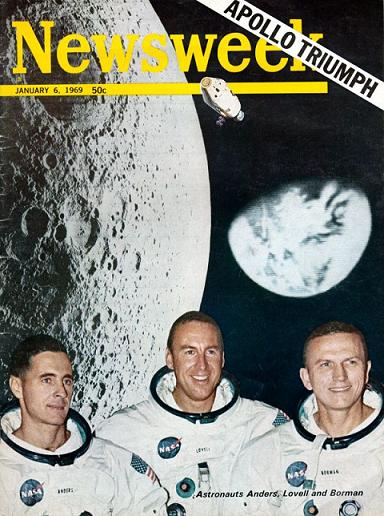
edit on 11/20/2011 by SayonaraJupiter because: (no reason given)
Originally posted by SayonaraJupiter
The other key is right there in 1968. Webb quits, Paine comes in, Nixon wins the election, (multiple layers of plausible deniability), Christmas Eve, Apollo 8, Book of Genesis, etc... it's a really good propaganda program.
edit on 11/20/2011 by SayonaraJupiter because: (no reason given)
One could say that US propaganda machine was much advanced than the Soviets.
The Soviets couldnt land men on the moon, or pull off such a hoax.
Thats why, no one, not even the US has gone back since.
Its impossible to pull off with our technology, and now impossible to fake again.
Originally posted by DJW001
reply to post by FoosM
Let me save everyone fifteen minutes of their lives.
Well at least you watched the videos.
reply to post by SayonaraJupiter
You have it exactly backwards, of course. Lucky for you, the United States guarantees freedom of speech and freedom of the press. Once NASA releases the images, anyone is free to duplicate them in any medium, or alter them for aesthetic, editorial or, yes, even propaganda purposes. You have done so yourself.
And the key for me is that NASA is not in control of the Apollo pictures that are released. They say they are but they are not - as the numerous documents in the last few pages have revealed! There are many oversight committees involved, ad hoc committees, and intelligence community is always there to control the propaganda images.
You have it exactly backwards, of course. Lucky for you, the United States guarantees freedom of speech and freedom of the press. Once NASA releases the images, anyone is free to duplicate them in any medium, or alter them for aesthetic, editorial or, yes, even propaganda purposes. You have done so yourself.
new topics
-
A Warning to America: 25 Ways the US is Being Destroyed
New World Order: 2 hours ago -
President BIDEN's FBI Raided Donald Trump's Florida Home for OBAMA-NORTH KOREA Documents.
Political Conspiracies: 7 hours ago -
Maestro Benedetto
Literature: 9 hours ago -
Is AI Better Than the Hollywood Elite?
Movies: 9 hours ago
top topics
-
President BIDEN's FBI Raided Donald Trump's Florida Home for OBAMA-NORTH KOREA Documents.
Political Conspiracies: 7 hours ago, 27 flags -
Weinstein's conviction overturned
Mainstream News: 17 hours ago, 8 flags -
Gaza Terrorists Attack US Humanitarian Pier During Construction
Middle East Issues: 14 hours ago, 8 flags -
Massachusetts Drag Queen Leads Young Kids in Free Palestine Chant
Social Issues and Civil Unrest: 16 hours ago, 7 flags -
Las Vegas UFO Spotting Teen Traumatized by Demon Creature in Backyard
Aliens and UFOs: 12 hours ago, 6 flags -
A Warning to America: 25 Ways the US is Being Destroyed
New World Order: 2 hours ago, 5 flags -
Meadows, Giuliani Among 11 Indicted in Arizona in Latest 2020 Election Subversion Case
Mainstream News: 15 hours ago, 5 flags -
2024 Pigeon Forge Rod Run - On the Strip (Video made for you)
Automotive Discussion: 13 hours ago, 4 flags -
Is AI Better Than the Hollywood Elite?
Movies: 9 hours ago, 3 flags -
Maestro Benedetto
Literature: 9 hours ago, 1 flags
active topics
-
University of Texas Instantly Shuts Down Anti Israel Protests
Education and Media • 266 • : SchrodingersRat -
New whistleblower Jason Sands speaks on Twitter Spaces last night.
Aliens and UFOs • 66 • : baablacksheep1 -
Gaza Terrorists Attack US Humanitarian Pier During Construction
Middle East Issues • 31 • : 5thHead -
HORRIBLE !! Russian Soldier Drinking Own Urine To Survive In Battle
World War Three • 50 • : F2d5thCavv2 -
Russia Ukraine Update Thread - part 3
World War Three • 5732 • : F2d5thCavv2 -
The Acronym Game .. Pt.3
General Chit Chat • 7751 • : F2d5thCavv2 -
Salvador Dali's Moustaches
People • 28 • : zosimov -
Is AI Better Than the Hollywood Elite?
Movies • 17 • : ThePsycheaux -
The best Rice dish i've ever tasted... Kimchi Rice
Food and Cooking • 26 • : lamhaocc -
A Warning to America: 25 Ways the US is Being Destroyed
New World Order • 1 • : 727Sky

